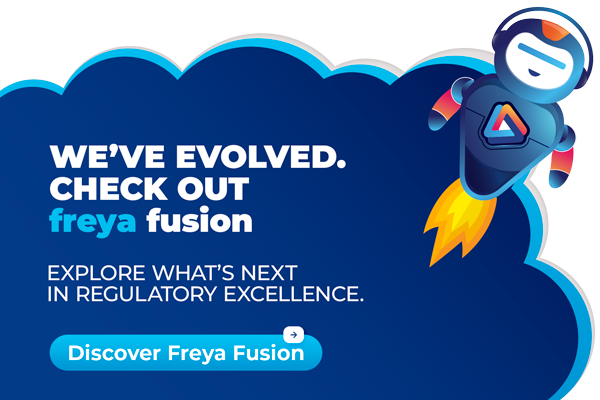
Regulatory work isn’t slow because it has to be, it’s slow because it’s fragmented. Generative AI is stepping in to change that. Embedded in Unified RIMS platforms, GenAI is rewriting the rules of regulatory operations. It drafts documents, anticipates compliance risks, tracks global regulation shifts, and helps teams move faster without sacrificing accuracy. What once took weeks can now take hours, with better results.
Understanding Generative AI in Regulatory Context
Generative AI refers to advanced algorithms capable of producing new content, such as text, based on training data. In regulatory affairs, this means automating the creation of documents, interpreting complex regulations, and providing insights that were previously time-consuming to obtain. When embedded in Unified RIMS, GenAI facilitates a seamless, end-to-end regulatory process, from initial planning to post-approval maintenance.
Key Applications of GenAI in Unified RIMS
- Automated Document Generation
One of the most impactful uses of GenAI is in drafting regulatory documents. By analyzing previous submissions and regulatory guidelines, AI can generate accurate and compliant documents quickly. This not only accelerates the submission process but also reduces the likelihood of human error. - Regulatory Intelligence and Compliance Monitoring
GenAI excels at sifting through vast amounts of regulatory data to identify relevant changes and trends. It can automatically analyze regulatory guidelines, historical content submissions, and past feedback from regulatory agencies to generate insights and recommendations for each compliance submission. This proactive approach ensures that companies remain compliant with evolving regulations. - Labeling and Artwork Management
Managing labeling and artwork across multiple regions is a complex task. GenAI can assist by generating consistent and compliant labeling content, ensuring that all materials meet regional regulatory requirements. This streamlines the labeling process and reduces the risk of non-compliance. - Health Authority Interactions
Responding to queries from health authorities is a critical aspect of regulatory affairs. GenAI can automate the intake and management of these communications, increasing the chances of new products or clinical trials being accepted faster and on the first attempt. - Risk Assessment and Management
By analyzing vast datasets, GenAI can identify potential compliance risks and suggest mitigation strategies. This predictive capability allows companies to address issues proactively, ensuring adherence to regulatory standards.
The Impact on the Regulatory Lifecycle
Integrating GenAI into Unified RIMS transforms the entire regulatory lifecycle:
- Planning and Strategy: AI-driven insights inform regulatory strategies, identifying optimal pathways for product approvals.
- Submission Preparation: Automated document generation and compliance checks expedite the preparation of submission dossiers.
- Approval Process: Enhanced accuracy and consistency in submissions increase the likelihood of first-cycle approvals.
- Post-Approval Maintenance: Continuous monitoring of regulatory changes ensures ongoing compliance and timely updates to approved products.
Real-World Adoption and Future Outlook
The U.S. Food and Drug Administration (FDA) has recognized the potential of AI in regulatory processes. The agency announced that all its centers will deploy artificial intelligence internally, following the completion of a new generative AI pilot for scientific reviewers. This move underscores the growing importance of AI in regulatory affairs.
As GenAI continues to evolve, its integration into Unified RIMS will become increasingly sophisticated, offering more advanced capabilities and further transforming the regulatory landscape.
How Freya Fusion Leverages Generative AI in Unified RIMS
Freya Fusion, an AI-first Unified RIMS platform, embeds Generative AI throughout the regulatory lifecycle to simplify, accelerate, and enhance regulatory operations. Rather than treating GenAI as an add-on, Freya Fusion integrates it as a core capability, aligned with real-world regulatory workflows.
Here’s how Freya Fusion applies GenAI:
- Intelligent Document Drafting: Freya’s generative engines assist in drafting regulatory documents based on structured templates, historical submissions, and jurisdiction-specific requirements - saving time while improving first-pass success rates.
- Quick Responses to Health Authority Queries: Freya Fusion’s AI analyzes regulatory feedback and helps reduce turnaround times and improve response accuracy.
- Labeling and Artwork Management: Using generative content models, Freya Fusion automates label content generation and artwork proofing, ensuring alignment with region-specific guidelines and reducing manual revision cycles.
- Conversational Interface: With Freya, the integrated regulatory chatbot, users can query regulatory data, retrieve documents, and even trigger workflows using natural language, powered by a knowledge graph and generative language models.
- Regulatory Intelligence Summarization: Freya Fusion continuously scans global regulatory updates and uses GenAI to synthesize key changes, offering proactive insights that regulatory teams can act on immediately.
In essence, Freya Fusion uses GenAI not just to speed up tasks, but to reimagine how regulatory teams interact with their systems; moving from reactive, manual processes to proactive, intelligent ones.
Conclusion
Generative AI isn’t just an upgrade; it’s a turning point.
As regulatory teams face mounting complexity and tighter timelines, embedding GenAI in a unified RIMS platform offers a powerful way forward. It brings intelligence, speed, and consistency to every step of the regulatory lifecycle. For life sciences organizations looking to modernize, GenAI is no longer optional, it’s essential.
